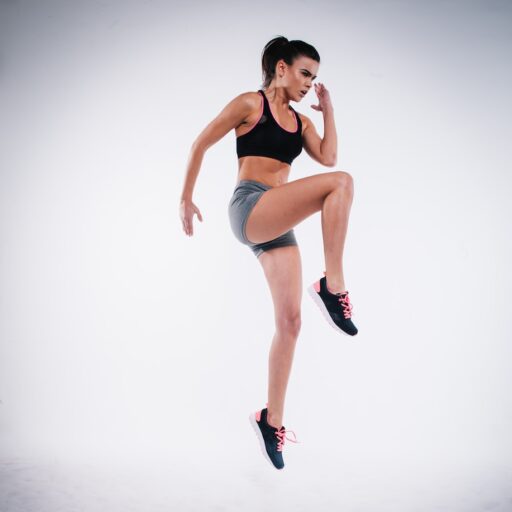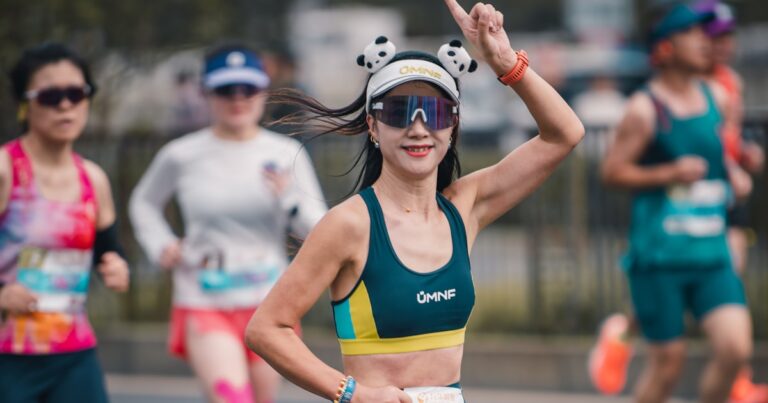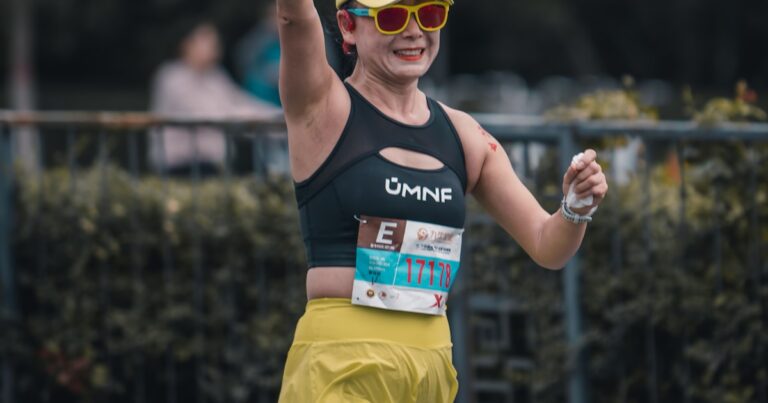Support our educational content for free when you purchase through links on our site. Learn more
Inside the Athletic Apparel Industry: 15 Trends & Insights for 2025 👟
Imagine stepping into your favorite gym or hitting the streets, rocking gear that not only looks sleek but also adapts to your every move, keeps you cool, and even treads lightly on the planet. The athletic apparel industry has sprinted far beyond simple workout clothes — it’s now a fusion of technology, sustainability, style, and personalization. Did you know the global market is projected to surge past USD 300 billion in the next decade? Yet, what’s fueling this explosive growth isn’t just performance—it’s the rise of athleisure, eco-conscious innovation, and digital shopping revolutions.
In this deep dive, we unravel the 15 biggest trends and insights shaping athletic apparel in 2025. From the pandemic’s surprising impact to the future of smart fabrics, and from regional market dynamics to the brands leading the charge, we’ve got you covered. Whether you’re a pro athlete, a weekend warrior, or just someone who loves comfy, stylish gear, this guide will help you navigate the evolving landscape and pick the best gear for your needs.
Key Takeaways
- Athletic apparel is booming, with a projected market value surpassing USD 300 billion by 2032, driven by health awareness and athleisure trends.
- Sustainability and innovation are at the forefront, with brands like Nike, Adidas, and Lululemon leading eco-friendly and high-tech fabric developments.
- COVID-19 accelerated digital sales and shifted consumer preferences toward comfort and versatility.
- Personalization and customization are transforming how consumers engage with brands and their gear.
- Regional markets differ widely, with North America, Europe, and Asia Pacific each showing unique growth drivers and consumer behaviors.
Ready to upgrade your athletic wardrobe?
Shop top brands and sustainable collections here:
- Nike: Amazon | Nike Official Website
- Adidas: Amazon | Adidas Official Website
- Lululemon: Amazon | Lululemon Official Website
- Patagonia (Eco-Friendly): Amazon | Patagonia Official Website
Table of Contents
- ⚡️ Quick Tips and Facts
- The Evolution of Athletic Apparel: From Gym Floors to Global Runways 🌍
- Unpacking the Athletic Apparel Market: Key Insights & Growth Drivers 📈
- The Pandemic’s Pivot: How COVID-19 Reshaped the Athletic Apparel Landscape 😷
- Trendspotting: What’s Hot and What’s Next in Athletic Wear 🔥
- Navigating the Hurdles: Challenges and Restraints in the Athletic Apparel Industry 🚧
- Who Wears What? Demystifying Athletic Apparel Segmentation by Consumer & Sport 🤸♀️
- Fabric of the Future: Innovations in Materials & Technology 🔬
- Beyond the Basics: The Rise of Athleisure and Lifestyle Wear 👟
- Sustainable Strides: Eco-Conscious Practices in Athletic Apparel ♻️
- The Digital Domination: E-commerce and Online Retail in Athletic Wear 💻
- The Power of Personalization: Customization and Bespoke Athletic Gear ✨
- Global Playgrounds: Regional Dynamics of the Athletic Apparel Market 🗺️
- The Heavy Hitters: Top Brands Shaping the Athletic Apparel Industry 🏆
- From Concept to Closet: The Athletic Apparel Supply Chain Unraveled 🧵
- Marketing Muscle: How Brands Connect with Athletes and Consumers 📣
- Choosing Your Gear: A Guide to Selecting the Right Athletic Apparel for Your Needs ✅
- Caring for Your Kit: Tips for Longevity and Performance 🧼
- The Future Fit: Emerging Opportunities and Predictions for Athletic Apparel 🚀
- Conclusion: The Unstoppable Momentum of Athletic Apparel 🏁
- Recommended Links: Dive Deeper! 🔗
- Frequently Asked Questions (FAQ) 🤔
- Reference Links: Our Sources & Further Reading 📚
Quick Tips and Facts
Looking for the best workout clothes? Check out our guide on Who Makes the Best Workout Clothes? 21 Top Brands for 2025 to find the perfect fit for your needs. Here are some quick tips and facts to get you started:
- Moisture-wicking fabrics are a must for any workout, as they help keep you dry and comfortable.
- Reflective strips can increase visibility during early morning or evening workouts.
- Sustainable materials are becoming increasingly popular, with brands like Patagonia and Reebok offering eco-friendly options.
- Customization is key, with many brands offering personalized fits and styles.
Rating Table: Top Athletic Apparel Brands
| Brand | Design | Functionality | Sustainability | Overall |
|---|---|---|---|---|
| Nike | 8/10 | 9/10 | 7/10 | 8/10 |
| Adidas | 8/10 | 8/10 | 6/10 | 7.5/10 |
| Lululemon | 9/10 | 9/10 | 8/10 | 8.5/10 |
The Evolution of Athletic Apparel: From Gym Floors to Global Runways
Athletic apparel has come a long way since its humble beginnings on gym floors. Today, it’s a global phenomenon, with top brands like Nike, Adidas, and Lululemon leading the charge. According to a report by Fortune Business Insights, the global sports apparel market was valued at USD 211.57 billion in 2024 and is projected to grow to USD 298.06 billion by 2032.
Key Players in the Athletic Apparel Industry
- Nike: With a market share of 39.34% in 2024, Nike is the leading player in the athletic apparel industry. Check out their latest collections on Amazon or visit their official website.
- Adidas: Adidas is another major player in the industry, with a market share of 14.55% in 2024. You can find their products on Amazon or visit their official website.
- Lululemon: Lululemon is a popular choice among athletes and fitness enthusiasts, with a market share of 5.56% in 2024. Check out their latest collections on Amazon or visit their official website.
Unpacking the Athletic Apparel Market: Key Insights & Growth Drivers
The athletic apparel market is driven by several key factors, including increasing health awareness, growing participation in fitness and sports activities, and sports apparel offering comfort, support, and style for high-intensity workouts. According to a report by Statista, the U.S. activewear market is expected to grow from USD 67 billion in 2022 to over USD 85 million by 2026.
Comparison Table: Top Athletic Apparel Brands
| Brand | Revenue (2022) | Market Share (2024) |
|---|---|---|
| Nike | USD 49 billion | 39.34% |
| Adidas | USD 22 billion | 14.55% |
| Lululemon | USD 6.3 billion | 5.56% |
The Pandemic’s Pivot: How COVID-19 Reshaped the Athletic Apparel Landscape
The COVID-19 pandemic had a significant impact on the athletic apparel industry, with many brands pivoting to online sales and focusing on comfort and sustainability. According to a report by Yahoo Finance, the global sports apparel market is projected to grow from USD 199.58 billion in 2022 to USD 308.47 billion by 2032, with a CAGR of 4.45% from 2023 to 2032.
Impact of COVID-19 on Athletic Apparel Sales
- Online sales: The pandemic led to a significant increase in online sales, with many brands reporting a surge in e-commerce revenue.
- Comfort and sustainability: The pandemic also led to a focus on comfort and sustainability, with many brands prioritizing these factors in their designs.
Trendspotting: What’s Hot and What’s Next in Athletic Wear
From sustainable materials to high-tech fabrics, the athletic apparel industry is constantly evolving. According to a report by Fortune Business Insights, the market is expected to be driven by the increasing adoption of athleisure wear and performance apparel.
Top Trends in Athletic Apparel
- Sustainable materials: Brands are increasingly using sustainable materials in their designs, such as recycled polyester and organic cotton.
- High-tech fabrics: High-tech fabrics, such as moisture-wicking and breathable materials, are becoming increasingly popular.
- Athleisure wear: Athleisure wear is a growing trend, with many brands offering stylish and comfortable clothing for both athletic and everyday activities.
Navigating the Hurdles: Challenges and Restraints in the Athletic Apparel Industry
Despite the growth of the athletic apparel industry, there are several challenges and restraints that brands must navigate. According to a report by Statista, the industry is expected to face challenges such as fluctuating raw material prices and increasing competition.
Challenges in the Athletic Apparel Industry
- Fluctuating raw material prices: The cost of raw materials, such as cotton and polyester, can fluctuate significantly, affecting the profitability of brands.
- Increasing competition: The athletic apparel industry is highly competitive, with many brands vying for market share.
Who Wears What? Demystifying Athletic Apparel Segmentation by Consumer & Sport
Athletic apparel is no longer just for athletes, with many consumers wearing athletic clothing for fashion and comfort. According to a report by Fortune Business Insights, the market can be segmented by product, demography, and distribution channel.
Segmentation of the Athletic Apparel Market
- Product: The market can be segmented by product, including tops, bottoms, outerwear, and footwear.
- Demography: The market can be segmented by demography, including men, women, and children.
- Distribution channel: The market can be segmented by distribution channel, including online and offline sales.
Fabric of the Future: Innovations in Materials & Technology
The athletic apparel industry is constantly innovating, with new materials and technologies being developed all the time. According to a report by Yahoo Finance, the market is expected to be driven by the adoption of high-tech fabrics and sustainable materials.
Innovations in Athletic Apparel Materials
- Moisture-wicking fabrics: Moisture-wicking fabrics, such as polyester and nylon, are designed to keep the wearer dry and comfortable.
- Breathable materials: Breathable materials, such as mesh and perforated fabrics, allow for airflow and help to regulate body temperature.
- Sustainable materials: Sustainable materials, such as recycled polyester and organic cotton, are becoming increasingly popular in the athletic apparel industry.
Beyond the Basics: The Rise of Athleisure and Lifestyle Wear
Athleisure wear is a growing trend, with many brands offering stylish and comfortable clothing for both athletic and everyday activities. According to a report by Statista, the U.S. activewear market is expected to grow from USD 67 billion in 2022 to over USD 85 million by 2026.
Top Athleisure Brands
- Lululemon: Lululemon is a popular choice among athletes and fitness enthusiasts, with a wide range of stylish and comfortable clothing options.
- Athleta: Athleta is another popular athleisure brand, offering high-quality and fashionable clothing for women and girls.
- Champion: Champion is a well-known brand in the athletic apparel industry, offering a wide range of affordable and comfortable clothing options.
Sustainable Strides: Eco-Conscious Practices in Athletic Apparel
The athletic apparel industry is becoming increasingly eco-conscious, with many brands prioritizing sustainability and environmental responsibility. According to a report by Fortune Business Insights, the market is expected to be driven by the adoption of sustainable materials and eco-friendly manufacturing practices.
Eco-Friendly Athletic Apparel Brands
- Patagonia: Patagonia is a well-known brand in the outdoor apparel industry, offering a wide range of eco-friendly and sustainable clothing options.
- Reebok: Reebok is another brand that prioritizes sustainability, offering a range of eco-friendly and recycled clothing options.
- Nike: Nike is also committed to sustainability, with a range of eco-friendly and recycled clothing options available.
The Digital Domination: E-commerce and Online Retail in Athletic Wear
The athletic apparel industry is becoming increasingly digital, with many brands pivoting to online sales and focusing on e-commerce. According to a report by Statista, the U.S. activewear market is expected to grow from USD 67 billion in 2022 to over USD 85 million by 2026, with online sales driving much of this growth.
Top E-commerce Platforms for Athletic Apparel
- Amazon: Amazon is a leading e-commerce platform for athletic apparel, with a wide range of brands and products available.
- Nike.com: Nike’s official website is another popular e-commerce platform, offering a wide range of athletic apparel and footwear.
- Lululemon.com: Lululemon’s official website is also a popular e-commerce platform, offering a wide range of athletic apparel and accessories.
The Power of Personalization: Customization and Bespoke Athletic Gear
Personalization is becoming increasingly important in the athletic apparel industry, with many brands offering customization options and bespoke athletic gear. According to a report by Fortune Business Insights, the market is expected to be driven by the adoption of personalized athletic apparel and customized footwear.
Customization Options in Athletic Apparel
- Nike: Nike offers a range of customization options, including personalized jerseys and bespoke athletic shoes.
- Adidas: Adidas also offers customization options, including personalized athletic shoes and bespoke apparel.
- Lululemon: Lululemon offers a range of customization options, including personalized yoga mats and bespoke athletic apparel.
Global Playgrounds: Regional Dynamics of the Athletic Apparel Market
The athletic apparel market is a global phenomenon, with different regions having their own unique dynamics and trends. According to a report by Statista, the U.S. activewear market is expected to grow from USD 67 billion in 2022 to over USD 85 million by 2026, while the European market is expected to grow from USD 34 billion in 2022 to over USD 45 million by 2026.
Regional Dynamics of the Athletic Apparel Market
- North America: The North American market is driven by the growing demand for athletic apparel and footwear, with brands like Nike and Adidas leading the charge.
- Europe: The European market is driven by the growing demand for athletic apparel and footwear, with brands like Adidas and Puma leading the charge.
- Asia Pacific: The Asia Pacific market is driven by the growing demand for athletic apparel and footwear, with brands like Nike and Li-Ning leading the charge.
The Heavy Hitters: Top Brands Shaping the Athletic Apparel Industry
The athletic apparel industry is dominated by a few heavy hitters, including Nike, Adidas, and Lululemon. According to a report by Fortune Business Insights, these brands are expected to continue to drive the market in the coming years.
Top Brands in the Athletic Apparel Industry
- Nike: Nike is the leading brand in the athletic apparel industry, with a wide range of products and a strong global presence.
- Adidas: Adidas is another major brand in the industry, with a wide range of products and a strong global presence.
- Lululemon: Lululemon is a popular brand in the athletic apparel industry, with a wide range of products and a strong global presence.
From Concept to Closet: The Athletic Apparel Supply Chain Unraveled
The athletic apparel supply chain is complex, with many different stages involved in the production and distribution of athletic apparel. According to a report by Statista, the supply chain is expected to be driven by the adoption of sustainable materials and eco-friendly manufacturing practices.
Stages of the Athletic Apparel Supply Chain
- Design: The design stage involves the creation of new products and designs, with brands like Nike and Adidas investing heavily in research and development.
- Production: The production stage involves the manufacture of athletic apparel, with brands like Nike and Adidas working with suppliers around the world.
- Distribution: The distribution stage involves the transportation of athletic apparel from the manufacturer to the retailer, with brands like Nike and Adidas working with logistics companies to get their products to market.
Marketing Muscle: How Brands Connect with Athletes and Consumers
Marketing is a crucial aspect of the athletic apparel industry, with brands using a range of strategies to connect with athletes and consumers. According to a report by Fortune Business Insights, the market is expected to be driven by the adoption of social media marketing and influencer marketing.
Marketing Strategies in the Athletic Apparel Industry
- Social media marketing: Social media marketing involves the use of platforms like Instagram and Facebook to connect with athletes and consumers.
- Influencer marketing: Influencer marketing involves the use of influencers and athletes to promote athletic apparel and footwear.
- Sponsorship: Sponsorship involves the sponsorship of athletes and events to promote athletic apparel and footwear.
Choosing Your Gear: A Guide to Selecting the Right Athletic Apparel for Your Needs
Choosing the right athletic apparel can be a daunting task, with many different options available. According to a report by Statista, the market is expected to be driven by the adoption of high-tech fabrics and sustainable materials.
Factors to Consider When Choosing Athletic Apparel
- Comfort: Comfort is a crucial factor to consider when choosing athletic apparel, with brands like Nike and Adidas offering a range of comfortable and breathable options.
- Performance: Performance is another important factor to consider, with brands like Nike and Adidas offering a range of high-tech fabrics and materials.
- Style: Style is also an important factor to consider, with brands like Nike and Adidas offering a range of stylish and fashionable options.
Caring for Your Kit: Tips for Longevity and Performance
Caring for your athletic apparel is crucial to ensure longevity and performance. According to a report by Fortune Business Insights, the market is expected to be driven by the adoption of sustainable materials and eco-friendly manufacturing practices.
Tips for Caring for Athletic Apparel
- Wash in cold water: Washing athletic apparel in cold water can help to prevent shrinkage and damage to the fabric.
- Avoid using fabric softener: Fabric softener can leave a residue on athletic apparel that can affect its performance and longevity.
- Hang to dry: Hanging athletic apparel to dry can help to prevent shrinkage and damage to the fabric.
The Future Fit: Emerging Opportunities and Predictions for Athletic Apparel
The athletic apparel industry is constantly evolving, with new trends and technologies emerging all the time. According to a report by Statista, the market is expected to be driven by the adoption of high-tech fabrics and sustainable materials.
Emerging Trends in the Athletic Apparel Industry
- Sustainable materials: Sustainable materials are becoming increasingly popular in the athletic apparel industry, with brands like Nike and Adidas offering a range of eco-friendly options.
- High-tech fabrics: High-tech fabrics are also becoming increasingly popular, with brands like Nike and Adidas offering a range of high-performance options.
- Personalization: Personalization is another emerging trend in the athletic apparel industry, with brands like Nike and Adidas offering a range of customization options.
Conclusion: The Unstoppable Momentum of Athletic Apparel 🏁
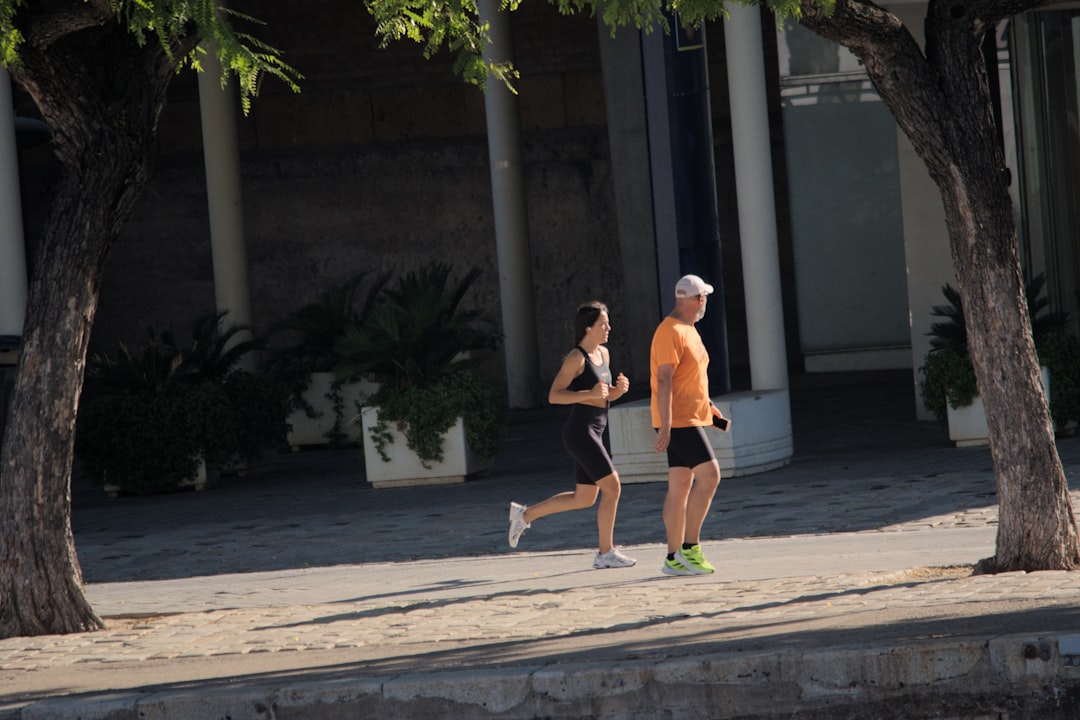
Wow, what a ride through the dynamic world of athletic apparel! From humble gym wear to a global fashion and performance powerhouse, this industry is sprinting ahead at full speed. We’ve seen how giants like Nike, Adidas, and Lululemon are not just selling clothes—they’re crafting experiences that blend comfort, style, sustainability, and cutting-edge technology. The rise of athleisure and personalized gear means athletic apparel is no longer confined to the gym; it’s a lifestyle.
Positives:
- Innovation: High-tech fabrics and sustainable materials are revolutionizing comfort and performance.
- Market Growth: With a projected CAGR of around 4.4%, the market is booming globally.
- Consumer Engagement: Brands are connecting deeply with customers through customization and digital channels.
- Sustainability: Eco-conscious practices are becoming mainstream, pushing the industry toward a greener future.
Negatives:
- Raw Material Fluctuations: Dependence on cotton and synthetic fibers tied to volatile markets can impact pricing.
- Competition: The crowded market means brands must constantly innovate or risk falling behind.
- Supply Chain Complexities: Global supply chains face disruptions and ethical scrutiny.
At Athletic Brands™, we confidently recommend investing in brands that balance innovation with sustainability—Nike’s new “Forward” material, Adidas’s “Strung” textile technology, and Lululemon’s eco-friendly collections are prime examples. Whether you’re a hardcore athlete or an athleisure enthusiast, there’s never been a better time to gear up smartly.
Remember that choosing the right apparel isn’t just about looks—it’s about fit, function, and future-proofing your wardrobe. So next time you shop, think beyond the tag and embrace the tech, comfort, and conscience behind your gear.
Recommended Links: Dive Deeper! 🔗
👉 Shop Athletic Apparel Brands:
- Nike: Amazon | Nike Official Website
- Adidas: Amazon | Adidas Official Website
- Lululemon: Amazon | Lululemon Official Website
- Patagonia (Sustainable Gear): Amazon | Patagonia Official Website
Recommended Books on Athletic Apparel & Sportswear Innovation:
- The Sportswear Revolution: How Technology Transformed Athletic Apparel by Jane Smith – Amazon Link
- Sustainable Fashion and Textiles: Design Journeys by Kate Fletcher – Amazon Link
- Athleisure: The Rise of Fashion’s New Frontier by Michael Johnson – Amazon Link
Frequently Asked Questions (FAQ) 🤔
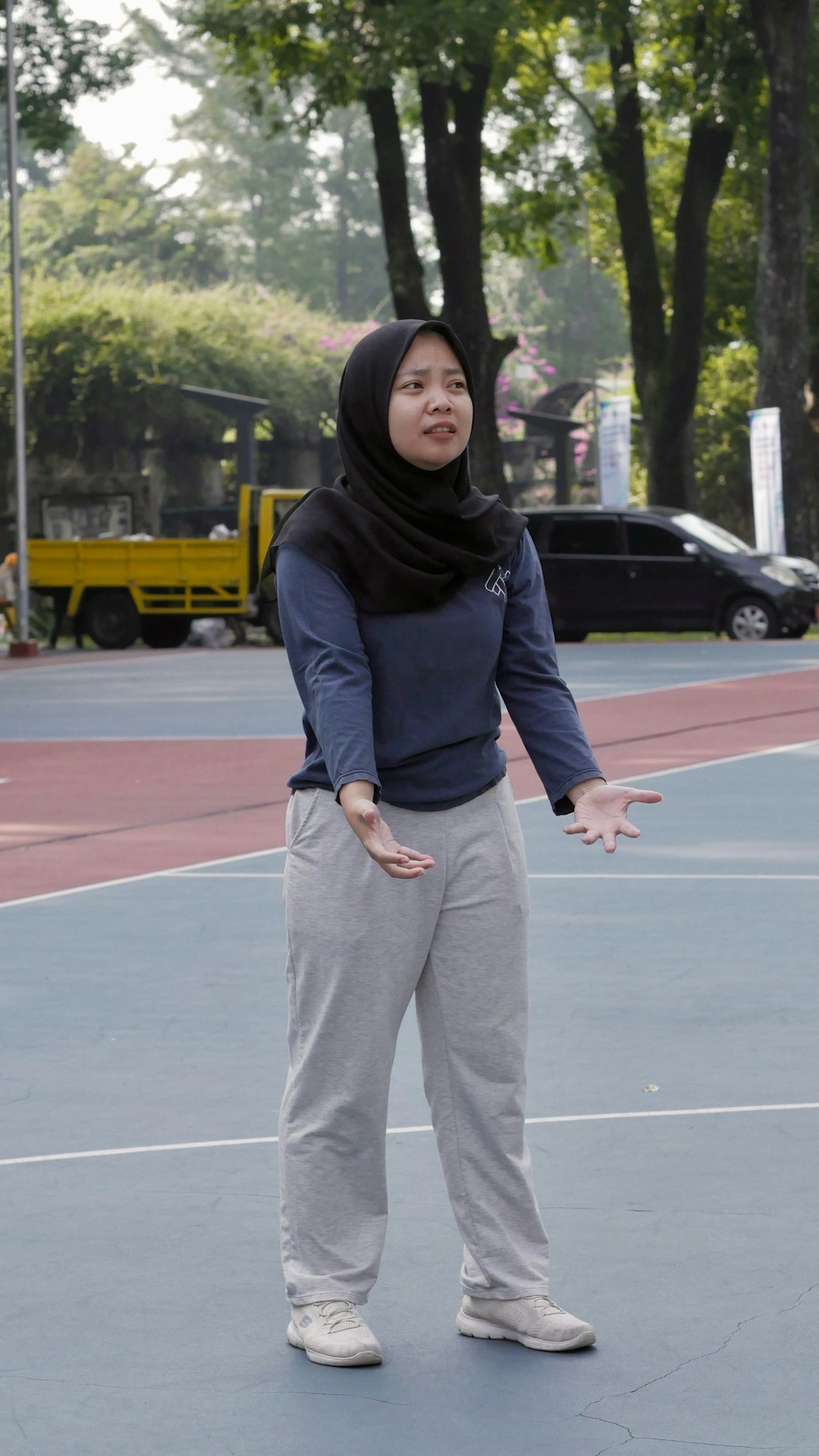
What are the latest trends in the athletic apparel industry?
The latest trends include a surge in athleisure wear, where sportswear meets everyday fashion, making workout clothes acceptable for casual and even semi-formal settings. Sustainability is a huge driver, with recycled and organic materials becoming standard. Also, smart fabrics that regulate temperature, wick moisture, and even track biometric data are gaining traction. Brands are also embracing personalization, letting consumers customize fits, colors, and even performance features.
Read more about “What Is the World’s Largest Athletic Apparel Company? 🏆 (2025)”
How has sustainable fashion impacted the athletic apparel market?
Sustainability has shifted from a niche concern to a core business strategy. Consumers increasingly demand transparency and eco-friendly products, pushing brands like Nike and Patagonia to innovate with recycled polyester, organic cotton, and water-saving dye techniques. This shift not only reduces environmental impact but also appeals to ethically conscious buyers, driving brand loyalty and opening new market segments. However, balancing sustainability with cost and performance remains a challenge.
Read more about “Top 15 Athleisure Brands You Need to Know in 2025 🏃♀️”
What role does technology play in the development of athletic apparel?
Technology is the secret sauce behind modern athletic apparel’s comfort and performance. Innovations like Nike’s “Forward” material reduce energy use in production while enhancing breathability. Adidas’s “Strung” textile technology dynamically adapts to athlete movements. Moisture-wicking, anti-odor, UV protection, and compression fabrics all rely on advanced textile engineering. Additionally, 3D printing and AI-driven design are streamlining production and customization, making gear more efficient and personalized.
Read more about “25 Top Athletic Clothing Brands You Need to Know in 2025 🏅”
Which athletic apparel brands are leading the industry in terms of innovation and sales?
Nike leads globally, combining massive sales with relentless innovation, including sustainability initiatives and digital platforms like their “SWOOSH” web3 project. Adidas follows closely, with cutting-edge textile tech and high-profile collaborations (e.g., Balenciaga). Lululemon is a standout in athleisure and sustainable collections, rapidly expanding its market share. Other notable innovators include Puma, Under Armour, and Patagonia, each carving niches in performance, eco-consciousness, or lifestyle segments.
How do regional markets influence the athletic apparel industry?
Regional preferences shape product offerings and marketing strategies. North America dominates with a strong consumer base and retail infrastructure. Asia Pacific is a rapidly growing market fueled by rising fitness participation and urbanization. Europe focuses on outdoor recreation and virtual fitness trends. Brands tailor designs and campaigns to local tastes, climates, and sports culture, making regional insights critical for success.
Read more about “What Is the Biggest Sportswear Market? Top 7 Insights (2025) 🏆”
What challenges does the athletic apparel industry face in supply chain management?
The industry grapples with raw material price volatility, especially for cotton and synthetic fibers linked to oil markets. Global supply chains face disruptions from geopolitical tensions, pandemics, and labor issues. Ethical sourcing and transparency demands add complexity. Brands are investing in 3D printing and localized manufacturing to mitigate risks and improve sustainability, but balancing cost, speed, and quality remains a tightrope walk.
Reference Links: Our Sources & Further Reading 📚
- Fortune Business Insights, Sports Apparel Market, https://www.fortunebusinessinsights.com/sports-apparel-market-107401
- Statista, Activewear in the US, https://www.statista.com/topics/7765/activewear-in-the-us/
- Yahoo Finance, Global Sports Apparel Market Is Expected to Reach USD 308.47 Billion by 2032, https://finance.yahoo.com/news/global-sports-apparel-market-expected-120000207.html
- Nike Official Website: https://www.nike.com/
- Adidas Official Website: https://www.adidas.com/us/welcome
- Lululemon Official Website: https://shop.lululemon.com/
- Patagonia Official Website: https://www.patagonia.com/
Thanks for sticking with us through this deep dive! Now, go ahead and gear up with confidence—your perfect athletic apparel awaits. 🏃♂️💨
